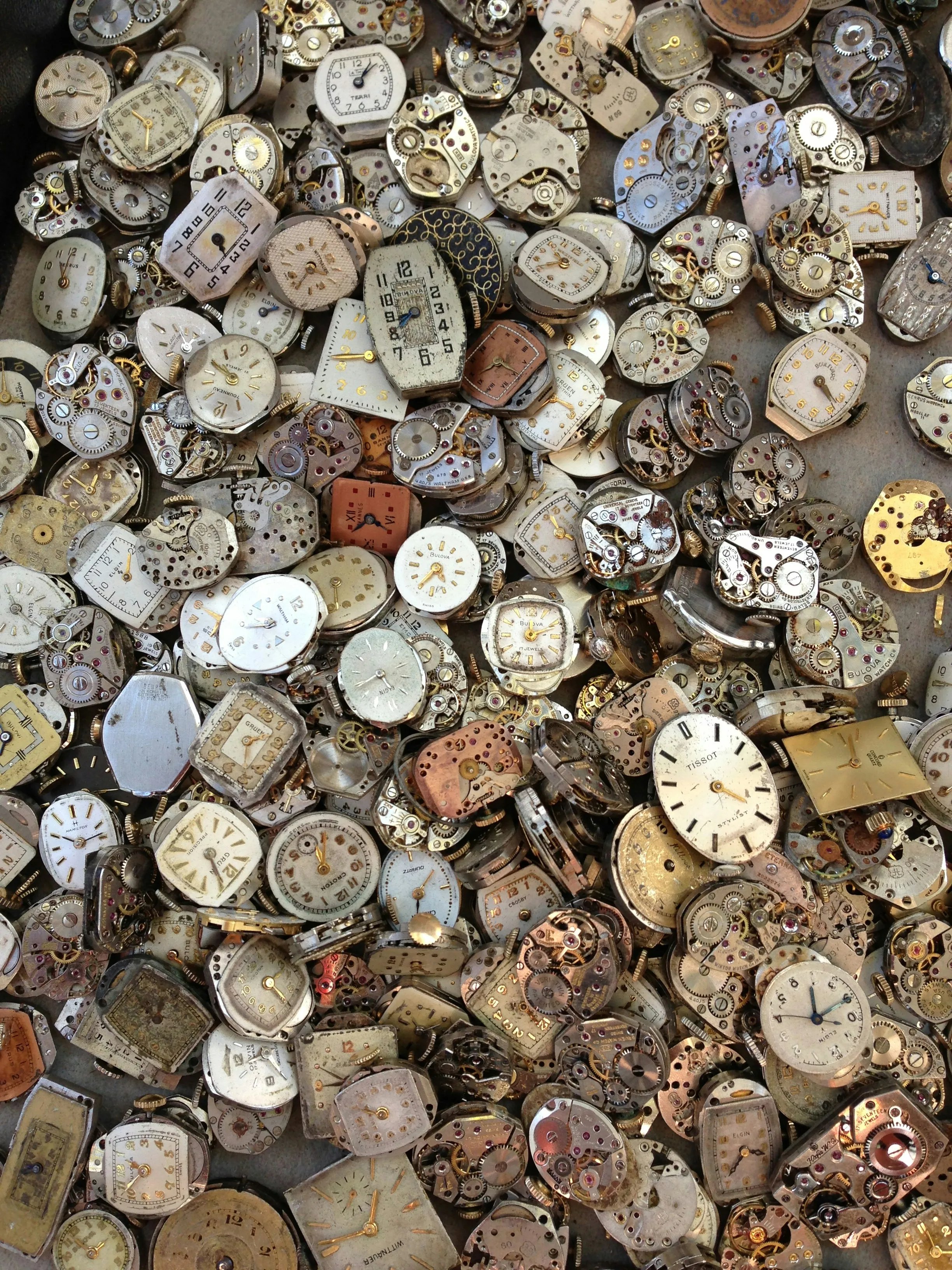Welcome to the Broken Clocks exhibit.
Here, the mechanisms of time have come to a standstill. These clocks, once precision instruments meant to measure the steady flow of hours and minutes, are now fractured relics of their former selves. Cracked faces, motionless hands, and shattered glass tell the story of the passage of time itself—how even the devices meant to mark it are not immune to the effects of age and wear. Some clocks have missing hands, while others show warped gears or pendulums frozen in mid-swing. Though they can no longer tick, their broken forms still speak to the intricate craftsmanship that once kept them in motion.
The internal workings of these clocks—delicate gears, springs, and levers—were carefully engineered to maintain accuracy and reliability. Clocks rely on precise mechanical movements, like the rhythmic swing of a pendulum or the steady ticking of a gear, to mark each second. Now, those finely tuned parts have worn down, become misaligned, or broken completely. In some clocks, the intricate network of tiny gears is exposed, revealing the once-hidden complexity that allowed time to be measured so exactly. These clocks, though silent now, offer a glimpse into the history of timekeeping, from grand pendulum clocks to small pocket watches.
Even in their broken state, these clocks symbolize humanity’s long-standing relationship with time—our desire to measure it, control it, and understand its passage. The broken faces and jammed mechanisms suggest a struggle against the inevitable: that time, despite our best efforts, continues to march forward, indifferent to the tools we create to mark its passing. These clocks, frozen in time, serve as metaphors for the fragility of our creations and the limits of our ability to manage time.
 Museum of Broken Things
Museum of Broken Things
